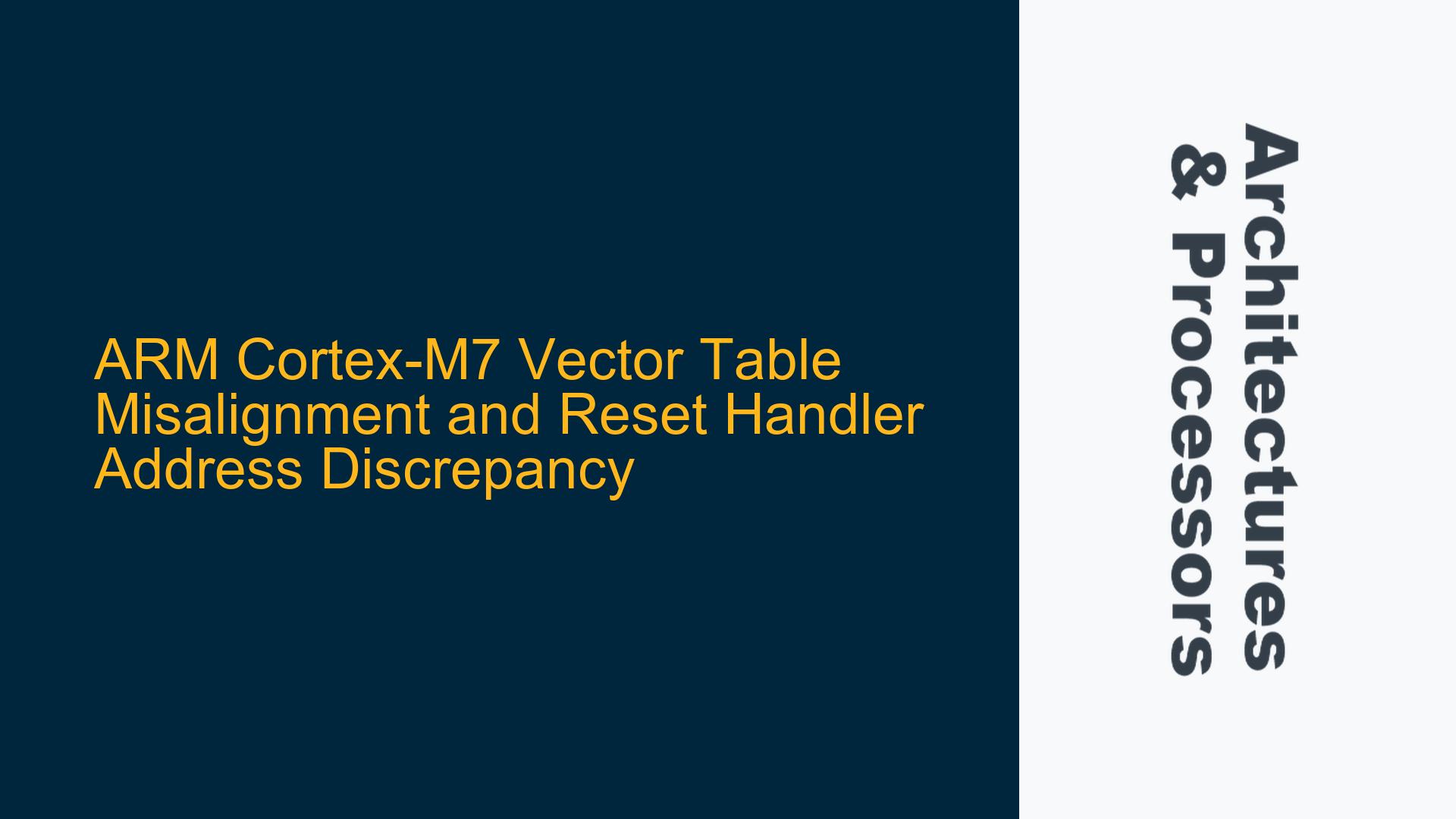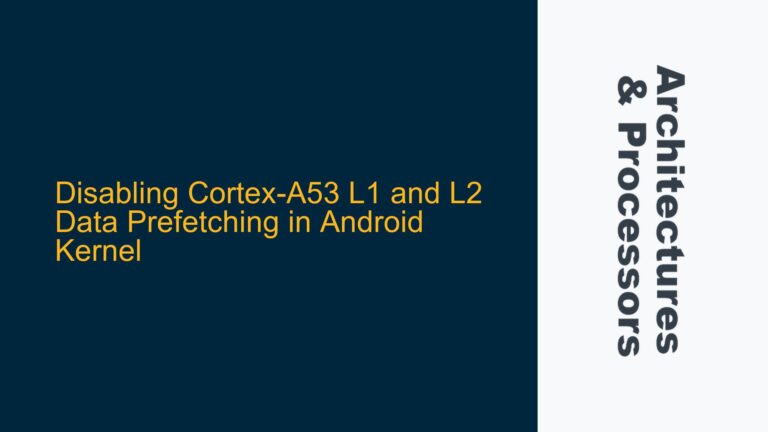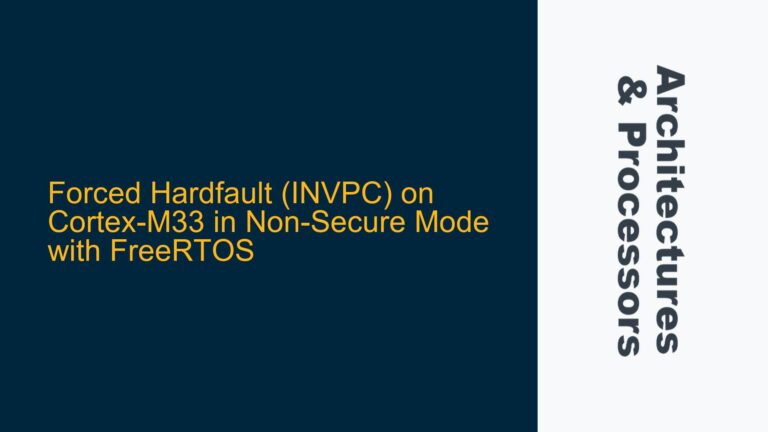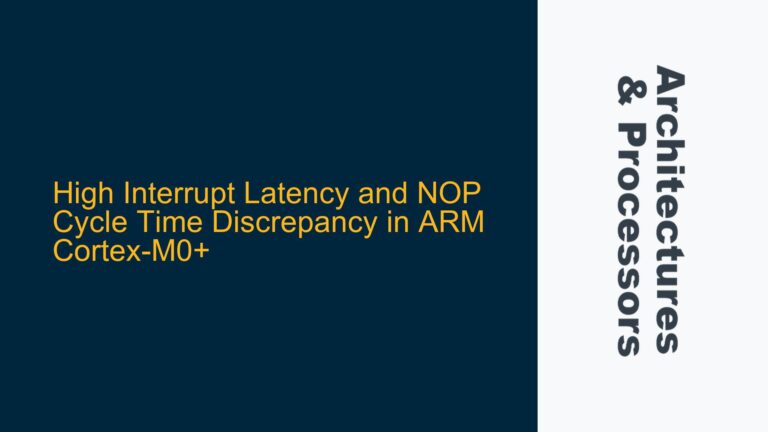ARM Cortex-M7 Vector Table Structure and Reset Handler Address Mismatch
The ARM Cortex-M7 processor, like other Cortex-M series processors, relies on a vector table to manage exception handling and system initialization. The vector table is a critical data structure located at a specific memory address, typically starting at 0x00000000. Each entry in the vector table corresponds to an exception or interrupt handler, with the first entry being the initial stack pointer value and the second entry being the reset handler address. According to the ARM Cortex-M7 documentation, the reset handler address should be located at 0x00000004. However, in some cases, developers observe a discrepancy between the expected reset handler address and the actual value stored at this memory location. This issue often manifests when using development tools like STM32 Cube IDE, where the reset handler address shown in the startup file does not match the value observed in the memory browser.
The reset handler address is crucial because it dictates where the processor should begin executing code after a reset. If the address stored at 0x00000004 does not point to the correct reset handler, the system may fail to boot or exhibit undefined behavior. In the case described, the reset handler address in the startup file is shown as 0x80000240, while the memory browser displays a different value at 0x00000004. This discrepancy suggests a misalignment between the vector table configuration and the actual memory layout, potentially caused by incorrect linker script settings, bootloader behavior, or memory mapping issues.
To understand this issue fully, it is essential to delve into the memory model of the ARM Cortex-M7 processor. The Cortex-M7 supports multiple memory regions, including internal flash, internal SRAM, and external memory interfaces. The memory map is defined by the processor’s architecture and the specific implementation in the microcontroller. For example, STM32 microcontrollers typically map internal flash memory to address 0x08000000, while internal SRAM is mapped to 0x20000000. External memory interfaces, such as SDRAM or QSPI flash, may be mapped to addresses starting at 0x60000000 or 0x90000000, depending on the configuration.
The reset handler address 0x80000240 falls within the range typically associated with external RAM or flash memory. This raises questions about whether the application is intended to run from external memory or if the vector table has been relocated. Additionally, the presence of a bootloader or runtime environment that modifies the vector table must be considered. Understanding the memory model and the role of the vector table is key to diagnosing and resolving this issue.
Bootloader Behavior, Linker Script Configuration, and Memory Mapping Conflicts
The discrepancy between the reset handler address in the startup file and the value observed in the memory browser can be attributed to several factors. One possible cause is the behavior of the bootloader. Many microcontrollers, including STM32 devices, use a bootloader to initialize the system and load the application code. The bootloader may relocate the vector table or modify the reset handler address to point to a different memory region. For example, if the bootloader is configured to load the application into external RAM, it may update the reset handler address to reflect the new location of the application code.
Another potential cause is the configuration of the linker script. The linker script defines the memory layout of the application, including the placement of the vector table and the reset handler. If the linker script is not configured correctly, it may generate an incorrect reset handler address or fail to align the vector table with the expected memory location. For instance, if the linker script specifies a base address for the vector table that does not match the microcontroller’s memory map, the resulting binary will contain an invalid reset handler address.
Memory mapping conflicts can also contribute to this issue. The Cortex-M7 processor supports multiple memory regions, each with its own attributes and access permissions. If the memory map is not configured correctly, the processor may access the wrong memory region when fetching the reset handler address. For example, if the vector table is located in internal flash but the memory map incorrectly maps this region to external memory, the processor may read an invalid address from the wrong memory region.
Additionally, the use of external memory interfaces, such as SDRAM or QSPI flash, can complicate the memory mapping and vector table configuration. These interfaces often require specific initialization sequences and configuration settings to function correctly. If the external memory interface is not properly initialized, the processor may fail to access the vector table or read an incorrect reset handler address.
Finally, the development environment and toolchain settings can play a role in this issue. Different toolchains may have varying default settings for memory layout and vector table placement. For example, some toolchains may assume that the application will run from internal flash, while others may assume external memory. If the toolchain settings are not aligned with the actual hardware configuration, the resulting binary may contain an incorrect reset handler address.
Correcting Vector Table Placement, Validating Linker Scripts, and Ensuring Proper Bootloader Configuration
To resolve the issue of the reset handler address discrepancy, a systematic approach is required. The first step is to verify the placement of the vector table in the memory map. This involves checking the linker script to ensure that the vector table is located at the correct base address. For STM32 microcontrollers, the vector table should typically be located at 0x08000000 for internal flash or 0x20000000 for internal SRAM. If the application is intended to run from external memory, the vector table should be placed at the appropriate base address for that memory region.
The linker script should define the memory regions and their attributes explicitly. For example, the following snippet shows a basic linker script configuration for an STM32 microcontroller with internal flash:
MEMORY
{
FLASH (rx) : ORIGIN = 0x08000000, LENGTH = 1024K
RAM (rwx) : ORIGIN = 0x20000000, LENGTH = 256K
}
SECTIONS
{
.vector_table : {
*(.vector_table)
} > FLASH
.text : {
*(.text)
} > FLASH
.data : {
*(.data)
} > RAM
}
This configuration ensures that the vector table is placed at the beginning of the internal flash memory. If the application is intended to run from external memory, the linker script should be updated accordingly.
The next step is to validate the bootloader configuration. If a bootloader is used, it must be configured to correctly initialize the memory interfaces and relocate the vector table if necessary. The bootloader should also ensure that the reset handler address points to the correct memory region. For example, if the bootloader loads the application into external RAM, it should update the reset handler address to reflect the new location of the application code.
To verify the bootloader behavior, the memory browser can be used to inspect the contents of the vector table after the bootloader has executed. The reset handler address should match the expected value based on the application’s memory layout. If the address is incorrect, the bootloader configuration should be reviewed and updated.
Another critical step is to ensure that the memory map is configured correctly. The Cortex-M7 processor’s memory map must align with the physical memory layout of the microcontroller. This includes configuring the memory attributes and access permissions for each memory region. For example, if the vector table is located in internal flash, the memory map should ensure that this region is accessible and mapped correctly.
The development environment and toolchain settings should also be reviewed. The toolchain must be configured to generate a binary that matches the microcontroller’s memory layout. This includes setting the correct base address for the vector table and ensuring that the linker script aligns with the hardware configuration. For example, in STM32 Cube IDE, the memory layout can be configured in the project settings under the "Target" tab.
Finally, it is essential to validate the entire system by running the application and verifying that it boots correctly. This involves checking the reset handler address in the memory browser and ensuring that the processor begins executing code from the correct location. If the application fails to boot or exhibits undefined behavior, the vector table placement, linker script, bootloader configuration, and memory map should be reviewed again.
By following these steps, the issue of the reset handler address discrepancy can be resolved, ensuring that the ARM Cortex-M7 processor boots correctly and executes the application as intended. Proper configuration of the vector table, linker script, bootloader, and memory map is critical to achieving a reliable and efficient embedded system implementation.






